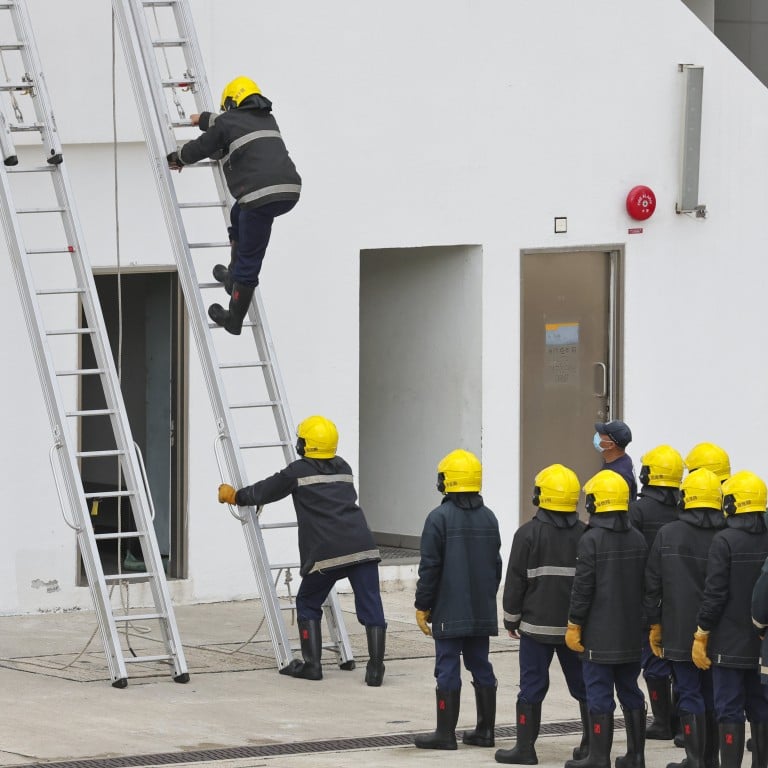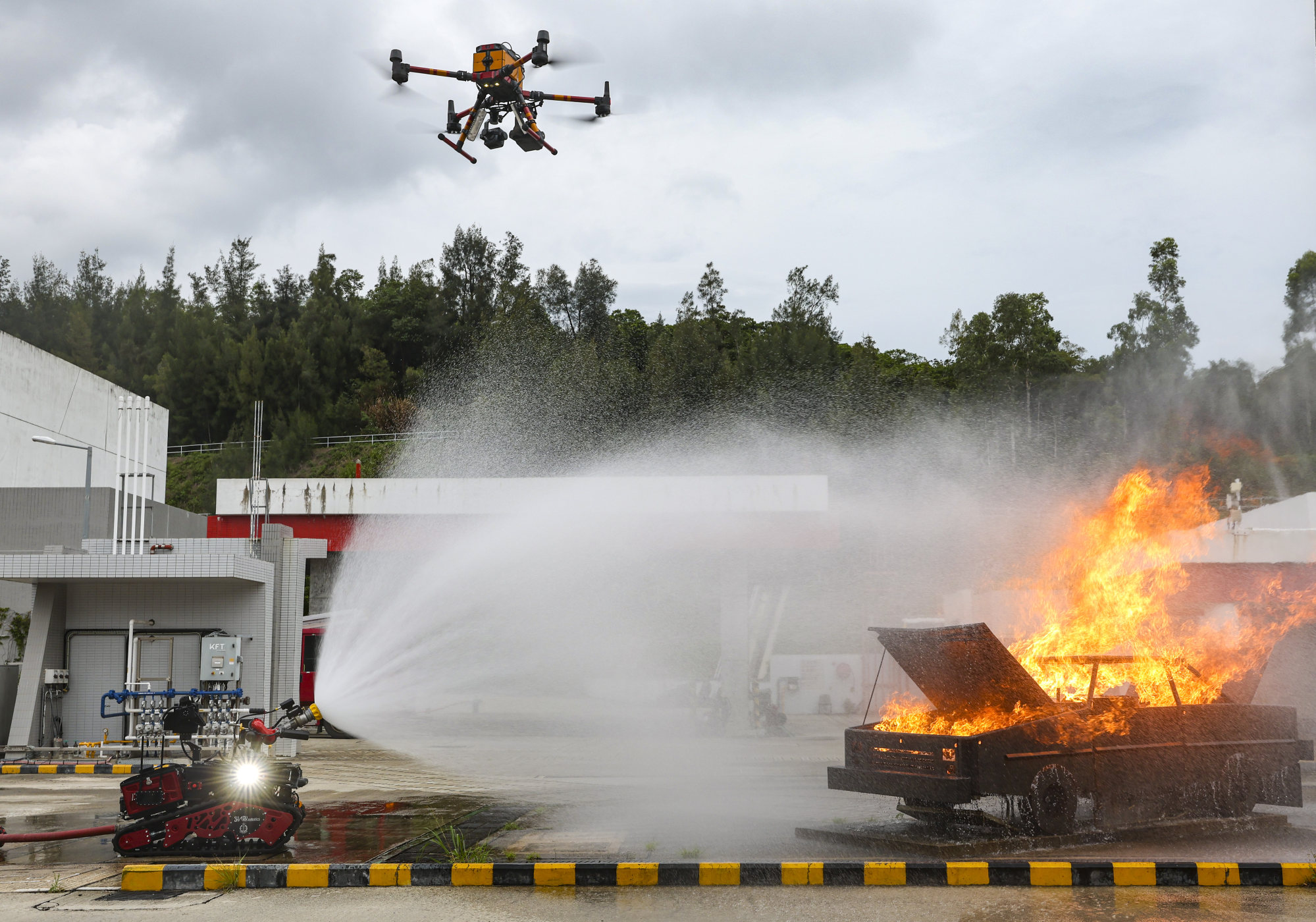
Hong Kong’s Fire Services Department readies 2,000 additional officers to handle possible 6th Covid-19 wave, in bid to ease strain on paramedics
- Director of Fire Services Andy Yeung says about 1,800 firefighters are now qualified to drive ambulances, to help free up paramedics to concentrate on other work
- Department has mapped out contingency plans and formulated a multi-tier response system in case of a sudden surge of infections
Hong Kong’s Fire Services Department will mobilise 2,000 additional officers to handle a possible sixth wave of Covid-19 infections in a bid to ease the manpower strain faced by its paramedics during an outbreak earlier this year.
Director of Fire Services Andy Yeung Yan-kin said his 10,000-strong force, including some 6,000 firefighters and 3,000 paramedics, had faced unprecedented challenges when Hong Kong was hit by a fifth Covid-19 wave earlier this year, with the caseload reaching 58,757 on a single day.
After the department reviewed its operations and resources, it mapped out contingency plans and formulated a multi-tier response system in the event of a sudden surge in infections, Yeung said.

About 1,800 firefighters have been trained and are now qualified to drive ambulances, to free up paramedics to concentrate on other work. Close to 200 non-operational paramedic staff, such as instructors, will also be requested to help out on the front line.
“[We will] mobilise ambulance officers on administrative duties, such as the staff at the Fire and Ambulance Services Academy and at the Ambulance Command Headquarters providing logistics support to the front line to man ambulances,” Yeung said.
“We will also mobilise our firefighters from the fire stream to the ambulance stream to carry out ambulance driver duties.”
With infections skyrocketing in February, many patients with no symptoms or those who tested positive with rapid antigen kits called the ambulance services to head to the already overstretched accident and emergency (A&E) wards at public hospitals.
Yeung said the department, which operated about 450 ambulances across the city, received as many as 2,700 emergency calls a day, with half of them Covid-related. Officers also received 4,000 calls each day on average from the hotline they set up in March to assist Covid-19 patients quarantined at community isolation facilities. At one stage, officers sent 1,700 patients to isolation centres, the largest in a single day.
Manpower was particularly stretched as up to 866 paramedics, or close to 27 per cent, had caught coronavirus at the peak of the fifth wave.
Hong Kong paramedics ‘stretched to limit’ by fifth wave of Covid-19 cases
“This is quite a hard time for the Fire Services Department to deal with the serious shortage of manpower and the influx of ambulance calls.”
Yeung said it took more than two hours to complete a call involving an infected resident as staff needed extra time to sanitise the ambulance after offloading patients. The department had set up five disinfection points near hospitals so as to shorten the disinfection process.
The 30-year veteran, who took over the department in March, said one of his missions was to upgrade the technology used in firefighting and rescue missions. The latest unveiled apparatus include two French-made remote-controlled robots, which are equipped with heavy hosepipes to inject water into spots that are too dangerous for firefighters to enter.
French firefighters used the same model to extinguish the massive conflagration at the 856-year-old Notre Dame Cathedral in Paris in 2019.

The 600kg robot costs HK$2.86 million and is equipped with four HD video cameras and one thermal imaging camera. It can project water to distances of up to 60 metres and is able to climb up stairs and rocky roads.
Another four multi-rotor drones, which have been put into operation this month, serve as scouts at fire or rescue locations as they allow aerial photography and 3D images.
Both types of equipment can aid risk assessment, surveillance and search in scenarios such as hazmat incidents, motor vehicle accidents, wildfire and rescue operations.
Yeung also pledged to safeguard national security by drawing up interdepartmental operational strategies, promoting the public’s emergency preparedness and continuing efforts to prevent smuggling of dangerous goods.

